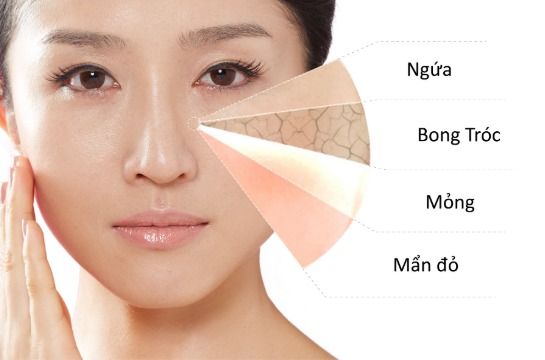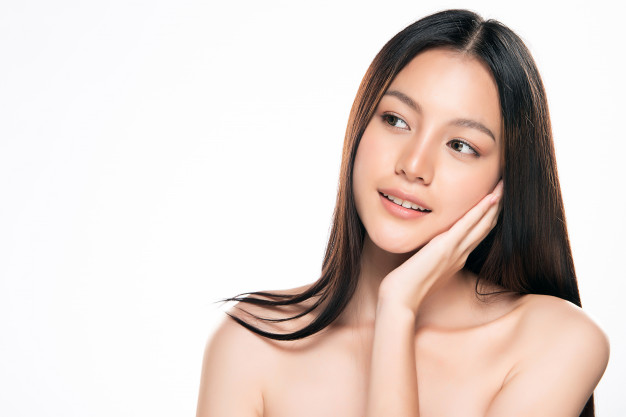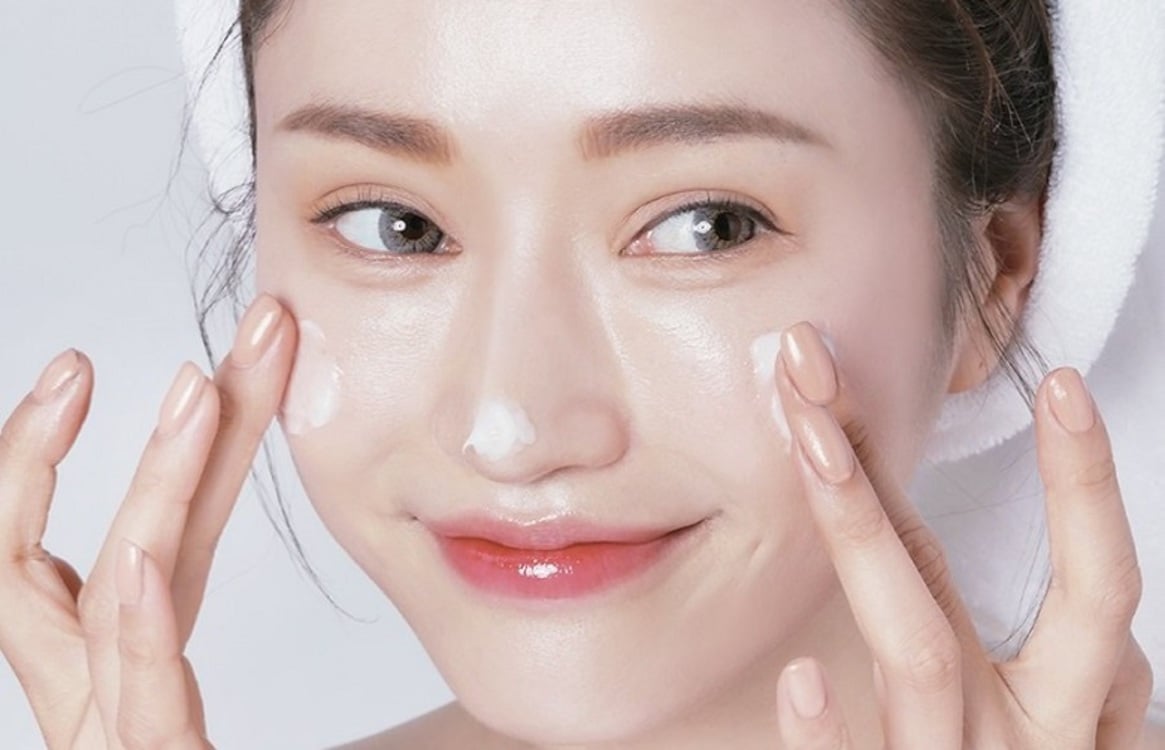AHA, BHA and Tretinoin - Which is best for a perfect skin?
AHA, BHA, Tretinoin are three of the important active ingredients in skin care. All three active ingredients have recorded in a large number of scientific studies and have been clinically proven to have excellent effects on the skin. With the development of information technology and the beauty industry, there is a rapidly increasing interest in the application of these active ingredients in daily use. However, they are also a double-edged sword that causes many undesirable effects if you do not know how to use it correctly.
1. Understanding AHA, BHA and Tretinoin
1.1. Exfoliating active ingredients AHA & BHA
Hydroxy Acids - or group of fruit acids, are most used in the treatment of skin problems, and also the most studied compounds. Thousands of clinical trials have proven the effectiveness of acids in wrinkle improvement, skin elasticity, as well as anti-aging effects.
In which, Alpha Hydroxy Acids (AHAs) and Beta Hydroxy Acids (BHAs) are the two main groups of Hydroxy Acids.
Alpha Hydroxy Acids (AHAs)
Alpha Hydroxy Acids (AHAs) are a group of natural water-based acids found in foods, especially fruits. AHAs work by breaking the bonds of dead skin cells on the epidermis, thereby stimulating the skin's cell renewal process.
Beta Hydroxy Acids (BHAs)
Beta Hydroxy Acids (BHAs) have a similar molecular structure to AHAs. However, what makes them different is that BHA can disolve in fat. Thanks to that, BHA can work in the pores.
Salicylic Acid is the most common BHA used in beauty products. However, because of legal factors in some countries, Salicylic Acid in cosmetics is very strictly regulated. For that reason, other Salicylic Acid derivatives such as Salicylate, Betaine Salicylate and Sodium Salicylate are considered alternatives to it.
The reason AHAs and BHAs are so popular is for their "miracle" benefits to the skin:
Improving skin texture, helps skin become smoother and even-toned.
Helping to improve wrinkles, mild aging spots
Preventing and treating acne thanks to the ability to clean the surface (AHA) and pores (BHA)
Anti-aging by acting as an antioxidant, neutralizing free radicals.
High concentrations of AHAs or BHAs are used in the treatment of acne, scars, melasma and hyperpigmentation
Thickens the dermis by stimulating collagen synthesis.
In home products, the concentration of the active ingredient used should not exceed 10% for AHAs and 1 - 2% for BHAs. In special treatment, the acid concentration can be up to 20 - 30%, you should not arbitrarily use these special products but need support from a specialist and a prescription from a dermatologist. Besides, acids have active properties that thin the stratum corneum, so the skin becomes more sensitive to the sun. Therefore, you must use sunscreen if you use AHA / BHA with frequent frequency and with high concentration.
1.2. Tretinoin - the gold standard of anti-aging
The history of the use of vitamin A in dermatology dates back to 1971, when Dr. Albert Kligman at the University of Pennsylvania, USA discovered Tretinoin (Retinoic Acid) to treat acne. During the treatment for patients, he noticed that their wrinkles in particular and their skin texture and pigmentation in general were significantly improved. After that, Johnson & Johnson Corporation introduced this product to the mass market under the name 'RetinA'. Since then, dermatology has continued to research a series of vitamin A derivatives (Retinoids) as well as precursors of Retinoic Acid for therapeutic applications. However, Tretinoin is by far still the active ingredient with the most research proving its effectiveness - which is still considered the "gold standard", a "monument" of skin aging treatment that any active ingredients may surpass.
Tretinoin is favored by many skin care followers mainly thanks to its multitasking, which can solve almost any skin problem:
Treating and preventing acne by promoting cell turnover and regulating sebum on the skin
Reducing wrinkles and preventing wrinkles
Acting as an antioxidant, preventing aging by neutralizing free radicals and inhibiting the activity of the enzyme Matrix Metallopeptidases (MMPs) - an enzyme that breaks down collagen.
Promoting the production of collagen in the skin, while thickening the dermis.
Stimulating blood vessel circulation under the skin, making the skin rosy
Improving skin damage and aging by excessive UV exposure (photodamage/photoaging)
Improving skin surface and texture. It can be used with products containing ingredients in the Alpha Hydroxy Acids group to increase the ability to smooth the skin's surface.
Fading pigment spots caused by photokeratosis, due to pigmentation disorders.
Being used to treat patients with psoriasis.
It is obviously that the strength of Tretinoin is the convergence of most of the advantages in improving the skin, but that same strength is also the weakness of this active ingredient. You should remember, the stronger the active ingredient, the more likely it is to cause irritation. Therefore, to own beautiful skin with Tretinoin, you need to be equipped with solid knowledge.
2. Evaluation of the combination of AHA, BHA and Tretinoin
The miraculous effects of AHAs, BHAs and Tretinoin are undisputed. However, to apply active ingredients in daily skin care is a different story.
2.1. AHA + BHA
In Theory:
Absolutely, because AHAs and BHAs both belong to the group of Hydroxy Acids.
In fact:
Dermatologists recommend that you should consider using a product containing an active ingredient with an AHA in conjunction with a similar product containing a BHA. Because combining the two products with the main nature of exfoliation will easily lead to "over-exfoliate" and weaken the skin barrier. This leads to skin irritation, making the skin weak and vulnerable to environmental damage.
How to combine properly?
It is possible to use products containing AHA and BHA in the same formula because
these products have been reduced by cosmetic manufacturers to suit the dosage of active ingredients.
Use every other day for products containing AHA or BHA as the main active ingredient. You should note that if your skin has symptoms of over exfoliation, you should treat it by reducing the frequency of use and using skin-restoring products.
2.2. AHA/BHA + Tretinoin
In theory:
It is possible to combine on-skin acids with Retinoic Acid in the treatment of aging skin, wrinkles, and pigment spots.
In fact:
A number of clinical trials have recorded positive results in the application of a combination regimen of AHA/BHA with Tretinoin in the treatment of acne skin and UV exposure (photodamaged) damaged skin.
A 2015 study used 0.025% Retinoic Acid combined with 12% Glycolic Acid to treat acne scars. The study evaluates that this regimen could be used as a on-skin treatment for acne, post-inflammatory hyperpigmentation, or acne scarring. However, the study also suggested that it is necessary to optimize the exact concentration of each substance used as well as the duration of treatment.
A 2016 study used 0.25% Tretinoin and 0.25% Retinol combined with a 30% Salicylic Acid peel to treat acne and skin damaged by UV exposure. The study concluded 0.25% Tretinoin and 0.25% Retinol can be used safely and effectively when applied to the skin immediately after a Salicylic Acid peel to minimize the signs of aging caused by damage caused by UV exposure.
How to combine properly?
Because Tretinoin does a good job of removing dead cells and stimulating cell renewal, you should not use Tretinoin at the same time with many peeling products during home use without a doctor’s prescription.
Tretinoin and AHA/BHA can be used at different sessions to avoid excessive effects of the product.
3. Depending on the skin to improvise
The combination of acid with Tretinoin is theoretically and practically possible. However, to ensure safety during use, you should be aware of the possible side effects, the rules for combining specific treatment products with restorative products, as well as be careful when using to avoid undesired results.
Today, with the explosion of information and network marketing, the market is witnessing a series of explosive trends in the beauty industry. Girls are often attracted to information flows on social networks and also bewildered by the same information. However, you should not follow the trend while underestimates the endurance of your skin. Only when you gain experience from which to conclude what you need, then the skin care work will go into the right trajectory: understanding yourself, understanding your skin, everything will be beautiful!
During process of learning and experimenting, you will go through a “trial & error” phase. Below, we recommend the following safety guidelines to help you have a good experience and minimize risks.
IMPORTANT NOTES WHEN USING THE PRODUCT:
Sunscreen is paramount: Most products thin the stratum corneum of the skin, making it more sensitive and in need of better protection. Get in the habit of always using a sunscreen with at least SPF 30 and reapplying every 2-3 hours.
Moisturizing and restorative products are indispensable: The stronger the Routine, the more moisturizers you have to equip to restoring the skin barrier to protect the skin's resistance.
Be aware of possible side effects:
For AHAs, with first use, you will usually experience stinging, burning, and tingling sensations on your skin. This phenomenon is not worrisome, after a while, the skin will respond to the action of the active substance.
For BHAs, a possible side effect is acne purging. However, you need to clearly distinguish between purging and breakouts to get the right solution.
Particularly with Tretinoin, the side effects that occur with most users are peeling and dry skin. Do not panic, but add more moisturizing products, special treatments and regularly apply sunscreen to your skin for quickly recovery, and observe and experiment to find the right frequency of suitable usage for yourself.
3.1. For the first time using active ingredients
When using the active ingredient for the first time, it is advisable to start with the lowest concentration. If you have sensitive skin, test the product on a small area of your face to check for no irritation.
For the very first use, use with low frequency (1-2 times/week) then gradually increase the frequency (3-4 times/week). During that time, observe and note the skin's ability to respond to the active ingredient.
Two new active ingredients should not be used together, but should be tested one at a time to minimize irritation.
3.2 In case of skin irritation when using or not responding to active ingredients
In case of skin irritation
If you increase the frequency to a new level and your skin shows signs of sensitivity, redness, please extend the frequency of use, and at the same time, you should actively add products containing skin-restoring active ingredients such as Ceramides, Cholesterol, Kinetin, Panthenol (vitamin B5) or Colloidal Oatmeal.
Next, you should avoid using many active ingredients at the same time, but use different sessions during the skin care routine.
Always use sunscreen with an SPF level of at least 30, stay out of the sun, and wear sunglasses, a jacket or a hat. If you spend a lot of time in the sun, you should reapply sunscreen every 2-3 hours.
In case the skin does not respond to the active ingredients
Usually, when using a new product, the skin will need time to adjust to this "friend". However, if there are signs such as skin becoming increasingly sensitive, inflammatory acne still not disappear after more than a week, there is a high chance that your skin is not suitable for the active ingredients in the product
In addition to actively using restorative products to bring your skin back to a stable condition, you should look for alternative solutions if your skin is not suitable. We suggest you refer to gentler derivatives of the same active ingredient:
AHA: Instead of Glycolic Acid, you can try a product containing Mandelic Acid, Phytic Acid
BHA: Instead of Salicylic Acid, you should refer to Betaine Salicylate derivative. Salicylic Acid found in wash-off products such as clay masks or cleansers is also a good choice.
Tretinoin: Before using Tretinoin, you should let your skin get used to Retinol, thereby increasing the concentration to use, or use other Retinoids such as Retinaldehyde.















